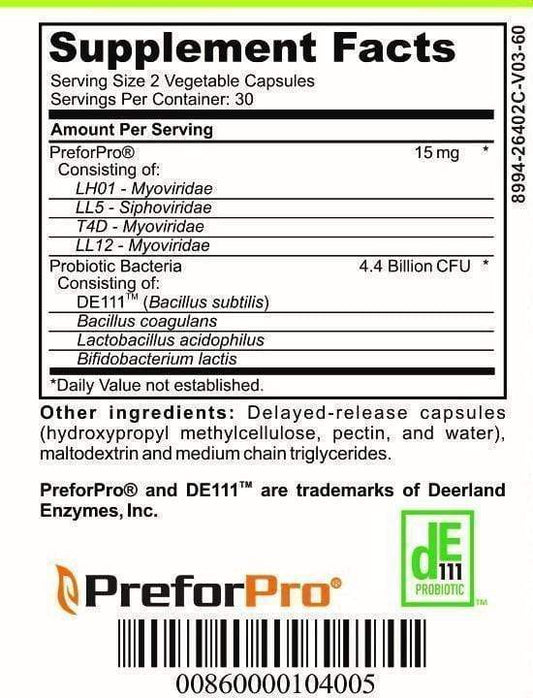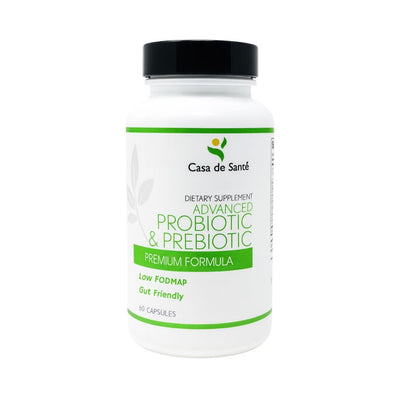The Nutritional Benefits of Red Lentils: A Comprehensive Guide
The Nutritional Benefits of Red Lentils: A Comprehensive Guide
Red lentils, also known as Masoor dal, are a popular legume that comes with a range of nutritional benefits. These tiny, disc-shaped legumes are packed with essential nutrients, making them an excellent addition to any diet. In this comprehensive guide, we will delve into the nutritional power of red lentils, exploring their benefits, drawbacks, and everything in between.
Unveiling the Nutritional Power of Red Lentils
Red lentils are a nutritional powerhouse, offering a wide array of essential nutrients that promote overall health and well-being. One cup of cooked red lentils contains approximately 230 calories, making it an excellent choice for individuals seeking to maintain or lose weight. Additionally, red lentils are incredibly low in fat, with less than one gram of fat per serving. This makes them a guilt-free source of protein and energy.
Exploring the Nutritional Benefits of Red Lentils
Beyond their low-calorie and low-fat content, red lentils are rich in essential vitamins and minerals. They are an excellent source of folate, providing around 90% of the recommended daily intake per serving. Folate plays a crucial role in cell division and DNA synthesis, making red lentils an important food choice for pregnant women.
Furthermore, red lentils are packed with iron, offering roughly 40% of the recommended daily intake per serving. Iron is an essential mineral that helps transport oxygen throughout the body and plays a vital role in energy production. Including red lentils in your diet can help prevent iron deficiency anemia and promote healthy blood circulation.
In addition to folate and iron, red lentils are an excellent source of manganese, a mineral that plays a vital role in metabolism, bone health, and antioxidant function. One serving of red lentils provides approximately 50% of the recommended daily intake of manganese, making them an excellent choice for individuals seeking to meet their manganese needs.
A Closer Look at the Potassium Content in Red Lentils
Red lentils are not only rich in vitamins and minerals but are also a great source of potassium. One serving of cooked red lentils provides approximately 350 milligrams of potassium, contributing around 7% of the recommended daily intake. Potassium is an essential mineral that helps regulate fluid balance, maintain proper heart function, and support nerve transmission.
By incorporating red lentils into your diet, you can boost your potassium intake, ensuring that your body functions optimally. Adequate potassium levels can help reduce the risk of high blood pressure, stroke, and heart disease, making red lentils an excellent choice for individuals striving for cardiovascular health.
Unveiling the Nutritional Power of Red Lentils
Red lentils are a nutritional powerhouse, offering a wide array of essential nutrients that promote overall health and well-being. One cup of cooked red lentils contains approximately 230 calories, making it an excellent choice for individuals seeking to maintain or lose weight. Additionally, red lentils are incredibly low in fat, with less than one gram of fat per serving. This makes them a guilt-free source of protein and energy.
Exploring the Nutritional Benefits of Red Lentils
Beyond their low-calorie and low-fat content, red lentils are rich in essential vitamins and minerals. They are an excellent source of folate, providing around 90% of the recommended daily intake per serving. Folate plays a crucial role in cell division and DNA synthesis, making red lentils an important food choice for pregnant women.
Furthermore, red lentils are packed with iron, offering roughly 40% of the recommended daily intake per serving. Iron is an essential mineral that helps transport oxygen throughout the body and plays a vital role in energy production. Including red lentils in your diet can help prevent iron deficiency anemia and promote healthy blood circulation.
In addition to folate and iron, red lentils are an excellent source of manganese, a mineral that plays a vital role in metabolism, bone health, and antioxidant function. One serving of red lentils provides approximately 50% of the recommended daily intake of manganese, making them an excellent choice for individuals seeking to meet their manganese needs.
A Closer Look at the Potassium Content in Red Lentils
Red lentils are not only rich in vitamins and minerals but are also a great source of potassium. One serving of cooked red lentils provides approximately 350 milligrams of potassium, contributing around 7% of the recommended daily intake. Potassium is an essential mineral that helps regulate fluid balance, maintain proper heart function, and support nerve transmission.
By incorporating red lentils into your diet, you can boost your potassium intake, ensuring that your body functions optimally. Adequate potassium levels can help reduce the risk of high blood pressure, stroke, and heart disease, making red lentils an excellent choice for individuals striving for cardiovascular health.
Moreover, red lentils are also a good source of dietary fiber. One serving of cooked red lentils contains around 15 grams of fiber, which is approximately 60% of the recommended daily intake. Fiber plays a crucial role in maintaining a healthy digestive system, promoting regular bowel movements, and preventing constipation. Including red lentils in your diet can help improve digestion and support overall gut health.
Additionally, red lentils are a versatile ingredient that can be used in various dishes. They can be added to soups, stews, salads, or even used as a base for vegetarian patties or spreads. With their rich nutritional profile and culinary versatility, red lentils are a valuable addition to any balanced diet.
The Advantages of Including Red Lentils in Your Diet
Red lentils offer numerous advantages when incorporated into your regular diet. One of the significant advantages is their high protein content. Red lentils are a fantastic plant-based protein source, making them an excellent choice for vegetarians and vegans. One serving of cooked red lentils provides approximately 18 grams of protein, making it comparable to meat, poultry, and fish protein sources.
In addition to being an excellent protein source, red lentils are rich in dietary fiber. One serving of cooked red lentils contains approximately 15 grams of fiber, offering around 60% of the recommended daily intake. Dietary fiber plays a vital role in maintaining healthy digestion, preventing constipation, and reducing the risk of various chronic diseases, such as heart disease, diabetes, and obesity.
The high fiber content in red lentils also helps control blood sugar levels. Consuming foods rich in fiber slows down the absorption of glucose into the bloodstream, preventing rapid spikes in blood sugar levels. This can be particularly beneficial for individuals with diabetes or those striving to maintain stable blood sugar levels.
Red Lentils: A Protein-Rich Legume
In addition to being a rich source of protein, red lentils contain all essential amino acids. These amino acids are the building blocks of proteins and are crucial for the healthy growth and repair of body tissues, the production of enzymes and hormones, and overall cellular health.
By including red lentils in your diet, you can ensure that your body receives an adequate supply of all essential amino acids. This makes red lentils an ideal choice for individuals following a plant-based diet or seeking to reduce their intake of animal products.
Boosting Your Potassium Intake with Red Lentils
As mentioned previously, red lentils are an excellent source of potassium. Potassium is a mineral that plays a key role in maintaining fluid balance, supporting healthy muscle function, and regulating blood pressure. Consuming foods high in potassium, such as red lentils, can help prevent potassium deficiency and promote optimal bodily function.
Furthermore, individuals who exercise regularly might benefit from incorporating red lentils into their diet. Potassium is essential for proper muscle contraction, making it vital for athletes and active individuals. By providing an adequate supply of potassium, red lentils can support muscle functioning and aid in post-workout recovery.
Another advantage of including red lentils in your diet is their low fat content. Red lentils are naturally low in fat, making them a healthy choice for individuals looking to reduce their overall fat intake. This can be beneficial for maintaining a healthy weight and reducing the risk of heart disease and other chronic conditions associated with high-fat diets.
In addition to their nutritional benefits, red lentils are also versatile in cooking. They can be used in a variety of dishes, including soups, stews, salads, and even as a meat substitute in vegetarian burgers or meatballs. Their mild flavor and quick cooking time make them a convenient and delicious addition to any meal.
The Drawbacks of Red Lentils
While red lentils offer an impressive array of nutritional benefits, it is important to note that they do come with a few drawbacks. One significant drawback is their relatively high calorie content compared to other lentil varieties. Red lentils are the highest calorie lentil variety, containing around 230 calories per cooked cup.
This higher calorie content may not be suitable for individuals who are closely monitoring their calorie intake or seeking to lose weight. However, when consumed in moderation and as part of a well-balanced diet, the nutritional benefits of red lentils outweigh their calorie content.
Red Lentils: The Highest Calorie Lentil Variety
Among all the lentil varieties, red lentils contain the most calories. This is primarily due to their higher carbohydrate content. While carbohydrates are an essential source of energy, individuals following a low-carbohydrate diet or those trying to manage blood sugar levels should consume red lentils in moderation.
Individuals with specific dietary restrictions, such as those following a ketogenic or low-carb diet, may consider opting for other lentil varieties that have lower carbohydrate content, such as green or brown lentils, which are better suited to their dietary needs.
Understanding the Carbohydrate Content of Red Lentils
One cup of cooked red lentils contains approximately 40 grams of carbohydrates, with about 15 grams coming from dietary fiber. While the fiber content in red lentils helps slow down the release of glucose into the bloodstream, it is essential for individuals with diabetes or those closely monitoring their carbohydrate intake to consider portion control and moderation when consuming red lentils.
By being mindful of portion sizes and incorporating red lentils into a well-balanced meal plan, individuals can enjoy the nutritional benefits of red lentils while managing their carbohydrate intake effectively.
Conclusion
Red lentils are a nutritional powerhouse, offering a wide range of essential vitamins, minerals, protein, and dietary fiber. They are an excellent choice for individuals seeking to maintain a healthy diet and lifestyle. The high protein content makes them popular among vegetarians and vegans, while the abundance of folate, iron, manganese, and potassium contributes to overall health and well-being.
However, it is important to keep in mind that red lentils have slightly higher calorie and carbohydrate content compared to other lentil varieties. Individuals with specific dietary restrictions or those monitoring their calorie and carbohydrate intake may need to moderate their consumption accordingly. Nonetheless, when included as part of a balanced diet, red lentils offer a multitude of nutritional benefits that can support overall health and wellness.
Incorporate this small yet mighty legume into your meal planning and enjoy the many nutritional advantages it has to offer. From its protein-packed goodness to its rich vitamin and mineral content, red lentils are a versatile and beneficial addition to any diet.




























